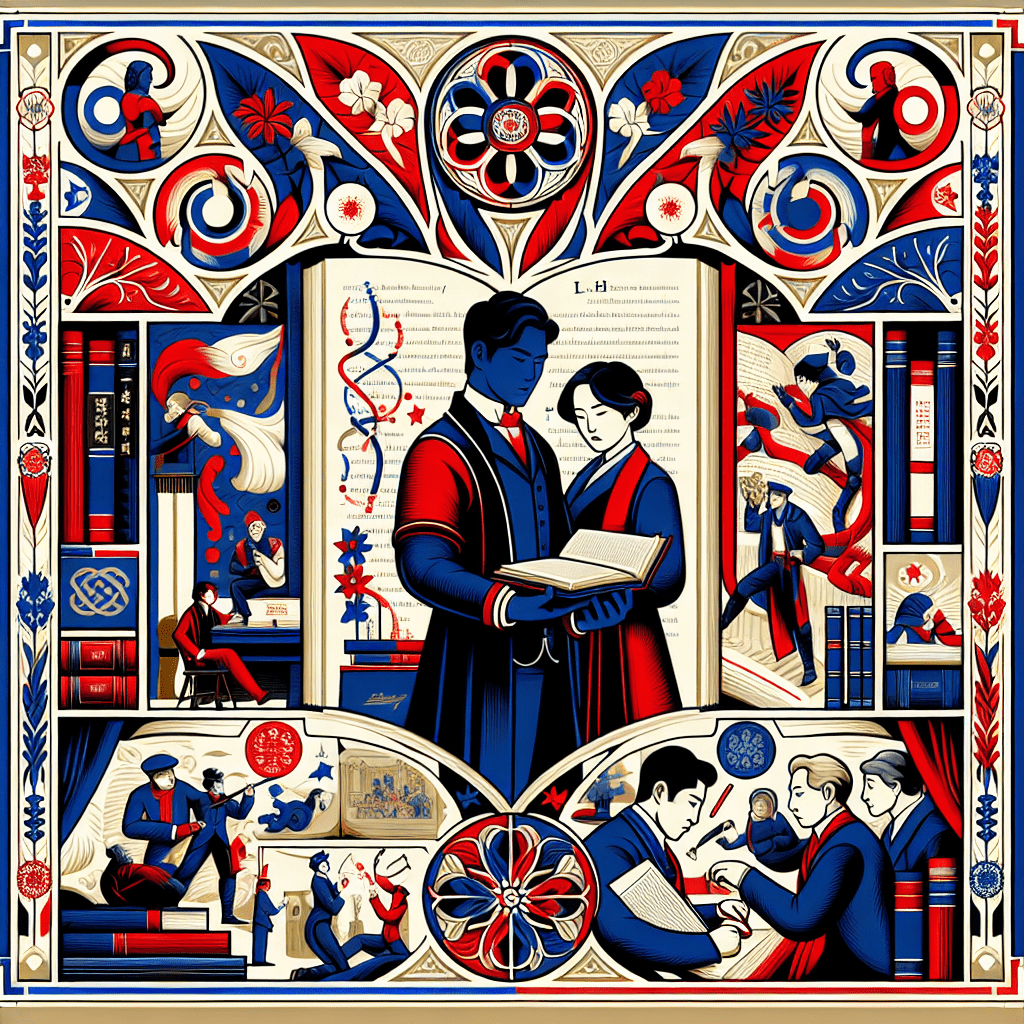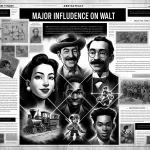-
Πίνακας περιεχομένων
- Red White and Royal Blue: A Comprehensive Summary
- Exploring Themes of Love and Identity in Red White and Royal Blue
- Character Analysis: Alex Claremont-Diaz in Red White and Royal Blue
- The Role of Politics in Red White and Royal Blue
- Friendship and Loyalty: Key Themes in Red White and Royal Blue
- The Significance of Family Dynamics in Red White and Royal Blue
- Cultural Impact of Red White and Royal Blue on LGBTQ+ Literature
- ΕΡΩΤΉΣΕΙΣ ΚΑΙ ΑΠΑΝΤΉΣΕΙΣ
“Red, White & Royal Blue: A captivating tale of love, identity, and political intrigue that bridges royal romance and the complexities of friendship.”
“Red, White & Royal Blue” is a contemporary romantic comedy novel by Casey McQuiston that follows the story of Alex Claremont-Diaz, the First Son of the United States, and Prince Henry of Wales. The narrative begins with a rivalry between the two, fueled by their families’ political ambitions and public personas. However, after a public altercation at a royal wedding, they are forced to fake a friendship to mitigate the fallout, leading to unexpected feelings and a secret romance.
The novel explores themes of identity, love, and the intersection of personal and political lives. It delves into the complexities of being in the public eye, the challenges of coming out, and the importance of family and friendship. The characters are richly developed, with Alex embodying the struggles of a biracial, bisexual young man navigating his place in a politically charged environment, while Prince Henry grapples with the expectations of royalty and his own desires. Together, they challenge societal norms and discover the power of love in a world that often seeks to define them.
Red White and Royal Blue: A Comprehensive Summary
“Red, White & Royal Blue” is a contemporary romance novel by Casey McQuiston that intricately weaves together themes of love, identity, and political intrigue against the backdrop of a fictionalized United States. The story centers around Alex Claremont-Diaz, the First Son of the United States, who is charismatic, ambitious, and determined to carve out his own identity in the shadow of his mother, President Ellen Claremont. The narrative begins with a rivalry between Alex and Prince Henry of Wales, which is fueled by their contrasting backgrounds and public personas. Their animosity is palpable, particularly when a staged incident at a royal wedding leads to a media frenzy, forcing the two young men to publicly feign friendship to mitigate the fallout.
As the plot unfolds, the initial hostility between Alex and Henry gradually transforms into a deep and unexpected connection. This evolution is marked by a series of secretive exchanges and heartfelt conversations that reveal their vulnerabilities and shared experiences. The author skillfully captures the nuances of their relationship, illustrating how their bond grows stronger as they navigate the complexities of their respective lives. The narrative delves into the challenges they face, including the pressures of public scrutiny, familial expectations, and the weight of their roles in the political landscape.
Moreover, the novel explores the theme of identity, particularly in relation to sexuality and the expectations placed upon individuals in the public eye. Alex’s journey of self-discovery is central to the story, as he grapples with his feelings for Henry and the implications of being in a same-sex relationship as a prominent political figure. This internal conflict is compounded by the societal norms and prejudices that persist, making their love story not only a personal journey but also a commentary on broader issues of acceptance and representation.
In addition to the romantic elements, “Red, White & Royal Blue” also addresses the intricacies of family dynamics and friendship. Alex’s relationship with his mother, President Claremont, is particularly significant, as it highlights the balance between personal desires and public responsibilities. The support of Alex’s close friends, including his best friend and campaign manager, also plays a crucial role in his development, providing a sense of community and understanding that is vital for his growth.
As the narrative progresses, the stakes rise, culminating in a series of events that test the strength of Alex and Henry’s relationship. The challenges they face are not merely external; they also force both characters to confront their own fears and insecurities. The resolution of their story is both poignant and uplifting, emphasizing the importance of love, authenticity, and the courage to embrace one’s true self.
Ultimately, “Red, White & Royal Blue” is more than just a romance; it is a celebration of love in all its forms, a critique of societal norms, and a testament to the power of connection. Through its well-developed characters and engaging plot, the novel resonates with readers, inviting them to reflect on their own experiences with love, identity, and the complexities of navigating a world that often imposes limitations. In doing so, McQuiston crafts a narrative that is both timely and timeless, leaving a lasting impact on its audience.
Exploring Themes of Love and Identity in Red White and Royal Blue
In “Red, White & Royal Blue,” Casey McQuiston intricately weaves a narrative that explores the multifaceted themes of love and identity against a backdrop of political intrigue and royal expectations. The story centers on the unlikely romance between Alex Claremont-Diaz, the First Son of the United States, and Prince Henry of Wales. Their relationship serves as a lens through which the author examines the complexities of personal identity, particularly in the context of societal expectations and familial pressures.
At the heart of the novel is the theme of love, which transcends traditional boundaries and challenges preconceived notions of romance. Alex and Henry’s relationship begins with animosity, rooted in their public personas and the expectations placed upon them. However, as they navigate their feelings, the narrative reveals how love can blossom in the most unexpected circumstances. This evolution from rivalry to romance highlights the transformative power of love, suggesting that it can bridge divides and foster understanding between individuals from vastly different worlds. The author skillfully illustrates that love is not merely a personal experience but also a political act, as their relationship has implications that extend beyond their private lives, affecting their families, countries, and the public perception of LGBTQ+ relationships.
Moreover, the exploration of identity is intricately tied to the theme of love. Alex grapples with his identity as a biracial, bisexual young man in a political landscape that often demands conformity. His journey of self-discovery is marked by moments of vulnerability and strength, as he learns to embrace his true self amidst the pressures of his role as the First Son. This internal conflict is mirrored in Henry’s character, who struggles with the weight of royal expectations and the fear of being true to himself. The juxtaposition of their experiences underscores the idea that identity is not static; rather, it is fluid and shaped by personal experiences, relationships, and societal influences.
As the narrative unfolds, the characters’ growth is evident, particularly in how they confront their fears and embrace their identities. Alex’s evolution is particularly poignant, as he learns to assert his voice and challenge the status quo. His relationship with Henry becomes a catalyst for change, not only in his personal life but also in the broader political landscape. This theme of activism and the importance of representation is woven throughout the story, emphasizing that love can inspire individuals to advocate for change and challenge societal norms.
Furthermore, the novel delves into the intersectionality of identity, exploring how race, sexuality, and privilege shape the characters’ experiences. Alex’s biracial background adds depth to his character, allowing readers to engage with the complexities of navigating multiple identities in a predominantly white political sphere. This representation is crucial, as it highlights the importance of diverse voices in literature and the need for stories that reflect the realities of marginalized communities.
In conclusion, “Red, White & Royal Blue” is a rich exploration of love and identity, masterfully crafted by Casey McQuiston. Through the lens of Alex and Henry’s relationship, the novel challenges readers to reconsider their perceptions of love, identity, and the societal structures that shape them. By intertwining these themes, McQuiston not only tells a compelling love story but also advocates for authenticity and acceptance in a world that often demands conformity. The result is a narrative that resonates deeply, encouraging readers to embrace their true selves and the love that comes with it.
Character Analysis: Alex Claremont-Diaz in Red White and Royal Blue
In “Red, White & Royal Blue,” Alex Claremont-Diaz emerges as a multifaceted character whose journey is central to the narrative’s exploration of identity, love, and political dynamics. As the son of the first female president of the United States, Alex is initially portrayed as a confident and charismatic young man, embodying the privilege and expectations that come with his position. However, beneath this exterior lies a complex individual grappling with the weight of his responsibilities and the pressures of public life. His character development is intricately tied to his evolving understanding of himself and his relationships, particularly with Prince Henry of Wales.
At the outset, Alex is characterized by his ambition and determination. He is fiercely loyal to his family and friends, often using his charm to navigate the political landscape. However, as the story unfolds, it becomes evident that Alex’s confidence is also a façade that masks his insecurities. His initial rivalry with Prince Henry serves as a catalyst for his personal growth, pushing him to confront his preconceived notions about love, duty, and the expectations placed upon him. This rivalry, which begins as a playful antagonism, gradually transforms into a deep emotional connection, forcing Alex to reevaluate his understanding of masculinity and vulnerability.
Moreover, Alex’s character is marked by his journey of self-discovery. Throughout the novel, he grapples with his bisexuality, a theme that resonates deeply within the context of his public persona. The societal pressures and expectations surrounding his identity create a tension that Alex must navigate, particularly as he begins to fall in love with Henry. This relationship challenges him to embrace his true self, moving beyond the confines of his political identity and familial obligations. As he learns to reconcile his personal desires with his public role, Alex becomes a more nuanced character, embodying the struggles faced by many young individuals in similar positions.
In addition to his romantic development, Alex’s character is also shaped by his relationships with his family and friends. His bond with his mother, President Claremont-Diaz, is particularly significant, as it highlights the complexities of their relationship. While he admires her strength and leadership, he also feels the burden of living up to her legacy. This dynamic adds depth to Alex’s character, illustrating the challenges of navigating familial expectations while forging his own path. Furthermore, his friendships, particularly with his best friend Nora, provide a support system that allows him to explore his identity and confront his fears.
As the narrative progresses, Alex’s character arc culminates in a profound transformation. He evolves from a young man defined by his privilege and expectations into someone who embraces his authentic self, unafraid to challenge societal norms. This journey is not only pivotal for his relationship with Henry but also serves as a broader commentary on the importance of self-acceptance and the courage to love openly. Ultimately, Alex Claremont-Diaz stands as a representation of the complexities of modern identity, illustrating that the path to self-discovery is often fraught with challenges but ultimately leads to a more profound understanding of oneself and the world. Through his experiences, readers are invited to reflect on the intersections of love, duty, and personal growth, making Alex a compelling and relatable character in contemporary literature.
The Role of Politics in Red White and Royal Blue
In “Red, White & Royal Blue,” the interplay of politics serves as a crucial backdrop that shapes the narrative and the characters’ development. The novel, written by Casey McQuiston, intricately weaves together themes of love, identity, and the complexities of public life, all while navigating the often tumultuous waters of political engagement. The story revolves around Alex Claremont-Diaz, the First Son of the United States, and his unexpected romance with Prince Henry of Wales. Their relationship unfolds against a landscape marked by political expectations, media scrutiny, and the weight of familial legacies, illustrating how personal lives can be profoundly influenced by the political arena.
From the outset, the political context is established as a significant element in the lives of the characters. Alex, as the son of the first female president, is acutely aware of the responsibilities that come with his position. His public persona is carefully crafted, reflecting the ideals and values of his mother’s administration. This awareness of political duty is juxtaposed with his personal desires, creating a tension that drives much of the narrative. As Alex navigates his feelings for Henry, he must also contend with the implications of their relationship on his family’s political standing and the broader implications for the presidency. This duality highlights the theme of personal sacrifice in the face of public duty, a recurring motif throughout the novel.
Moreover, the political landscape in “Red, White & Royal Blue” is not merely a backdrop; it actively shapes the characters’ interactions and decisions. The media plays a pivotal role in this dynamic, as the relationship between Alex and Henry becomes a subject of intense public interest. The scrutiny they face from journalists and the public forces them to confront their identities and the ways in which they are perceived. This external pressure serves to amplify their internal struggles, as they grapple with the fear of being outed and the potential fallout that could ensue. The novel deftly explores how the characters must navigate their love in a world that often prioritizes political narratives over personal truths.
In addition to the personal ramifications of politics, the novel also addresses broader societal issues, such as LGBTQ+ representation and the intersection of identity and power. Alex and Henry’s relationship challenges traditional norms and expectations within both American and British political spheres. Their love story becomes a symbol of progress and acceptance, reflecting a changing political landscape that increasingly embraces diversity. This theme resonates deeply, as it underscores the importance of visibility and representation in politics, particularly for marginalized communities.
As the narrative unfolds, the characters evolve in response to their political environment. Alex’s journey from a somewhat reckless and carefree young man to a more grounded individual who understands the weight of his actions is particularly poignant. His relationship with Henry catalyzes this transformation, prompting him to consider not only his own desires but also the implications of his choices on a larger scale. Similarly, Henry’s character arc reveals the pressures of royal expectations and the desire for authenticity in a world that often demands conformity.
Ultimately, “Red, White & Royal Blue” presents a nuanced exploration of the role of politics in shaping personal relationships. Through the lens of Alex and Henry’s romance, the novel illustrates how love can flourish even in the most challenging political climates, serving as a testament to the resilience of the human spirit. The intertwining of personal and political narratives enriches the story, making it a compelling commentary on the complexities of love, identity, and the ever-evolving nature of societal norms.
Friendship and Loyalty: Key Themes in Red White and Royal Blue
In “Red, White & Royal Blue,” friendship and loyalty emerge as pivotal themes that intricately weave through the narrative, shaping the characters’ relationships and personal growth. The story revolves around the unlikely friendship between Alex Claremont-Diaz, the son of the first female president of the United States, and Prince Henry of Wales. Initially, their relationship is marked by rivalry and animosity, fueled by the pressures of their respective positions and the expectations placed upon them. However, as the plot unfolds, their animosity gradually transforms into a deep and abiding friendship, illustrating the profound impact that genuine connection can have on individuals navigating the complexities of their lives.
The evolution of Alex and Henry’s friendship serves as a testament to the power of understanding and empathy. As they begin to share their experiences, fears, and aspirations, they discover common ground that transcends their royal and political identities. This shared vulnerability fosters a bond that not only challenges societal norms but also encourages both characters to embrace their true selves. The narrative emphasizes that friendship can be a sanctuary, providing solace and support in the face of external pressures. Through their interactions, the novel highlights how authentic friendships can empower individuals to confront their insecurities and embrace their identities, ultimately leading to personal growth.
Moreover, loyalty plays a crucial role in the development of the characters and their relationships. As Alex and Henry navigate the challenges posed by their families, public scrutiny, and their own feelings, their loyalty to one another becomes a cornerstone of their connection. This loyalty is tested repeatedly, particularly as they grapple with the implications of their relationship in a world that often prioritizes tradition and decorum over personal happiness. The characters’ willingness to stand by each other, even in the face of adversity, underscores the theme that true loyalty is not merely about unwavering support but also about the courage to challenge societal expectations for the sake of love and friendship.
In addition to the central relationship between Alex and Henry, the theme of friendship and loyalty extends to the supporting characters, who play significant roles in shaping the narrative. Alex’s close-knit circle of friends, including his best friend Nora and his brother, provide a backdrop of unwavering support that reinforces the importance of loyalty in times of crisis. Their encouragement and acceptance serve as a reminder that friendship can be a source of strength, enabling individuals to confront their fears and pursue their desires. Similarly, Henry’s relationships with his family and friends reveal the complexities of loyalty within the context of royal obligations, illustrating the sacrifices that often accompany such commitments.
Ultimately, “Red, White & Royal Blue” presents a nuanced exploration of friendship and loyalty, illustrating how these themes are interwoven into the fabric of the characters’ lives. The narrative demonstrates that true friendship is characterized by mutual respect, understanding, and the willingness to stand by one another, even when faced with formidable challenges. As Alex and Henry navigate their evolving relationship, they embody the idea that loyalty is not just about allegiance but also about the courage to be authentic in a world that often demands conformity. Through their journey, the novel invites readers to reflect on the transformative power of friendship and the enduring strength of loyalty, reminding us that these bonds can shape our identities and guide us toward our true selves.
The Significance of Family Dynamics in Red White and Royal Blue
In “Red, White & Royal Blue,” the significance of family dynamics plays a crucial role in shaping the characters and their relationships, ultimately influencing the narrative’s progression. The novel, written by Casey McQuiston, intricately weaves the personal and political lives of its protagonists, Alex Claremont-Diaz and Prince Henry of Wales, against the backdrop of their respective family structures. These dynamics not only provide context for the characters’ actions but also serve as a lens through which the themes of love, identity, and duty are explored.
At the heart of the story is Alex, the son of the first female President of the United States. His relationship with his mother, Ellen Claremont, is characterized by a blend of admiration and pressure. As a prominent political figure, Ellen embodies the ideals of strength and resilience, which Alex aspires to emulate. However, this aspiration often leads to internal conflict, as he grapples with the expectations placed upon him. The familial bond between mother and son is both supportive and constraining, illustrating the complexities of navigating personal desires within the framework of public duty. This dynamic is further complicated by the political landscape, where Alex’s actions are scrutinized not only as an individual but also as a representative of his mother’s legacy.
Conversely, Prince Henry’s family dynamics present a stark contrast to Alex’s experience. Henry is ensnared in the rigid expectations of the British royal family, where tradition and duty overshadow personal happiness. His relationship with his parents, particularly his mother, the Queen, is fraught with tension. The royal family’s emphasis on propriety and public image creates a chasm between Henry’s true self and the persona he is required to project. This internal struggle is exacerbated by the weight of royal expectations, which dictate not only his actions but also his romantic choices. As Henry navigates his feelings for Alex, the tension between familial obligation and personal desire becomes increasingly pronounced, highlighting the sacrifices he must consider in pursuit of authenticity.
Moreover, the novel delves into the broader implications of family dynamics through the lens of friendship and chosen family. Alex’s close-knit group of friends serves as a support system that contrasts with the pressures exerted by their biological families. This chosen family provides a safe space for self-expression and acceptance, allowing Alex and Henry to explore their identities without the constraints imposed by their respective backgrounds. The camaraderie among friends underscores the importance of solidarity in the face of societal expectations, illustrating how love and support can transcend traditional family structures.
As the narrative unfolds, the characters’ journeys reveal the transformative power of love in reshaping familial relationships. Alex and Henry’s romance challenges the status quo, prompting both families to confront their preconceived notions about duty, identity, and acceptance. The evolution of these relationships serves as a testament to the idea that family dynamics are not solely defined by blood but can also be redefined through love and understanding.
In conclusion, “Red, White & Royal Blue” intricately examines the significance of family dynamics, illustrating how they shape the identities and choices of its characters. Through the contrasting experiences of Alex and Henry, the novel highlights the complexities of familial relationships while emphasizing the importance of chosen family and the transformative power of love. Ultimately, the narrative invites readers to reflect on the ways in which family can both constrain and liberate, shaping the paths we choose to follow in our pursuit of happiness and authenticity.
Cultural Impact of Red White and Royal Blue on LGBTQ+ Literature
“Red, White & Royal Blue,” authored by Casey McQuiston, has emerged as a significant work within LGBTQ+ literature, resonating with readers and critics alike since its release. The novel’s cultural impact is profound, as it not only entertains but also challenges societal norms and expectations surrounding love, identity, and representation. By weaving a narrative that centers on a romantic relationship between the First Son of the United States and a British prince, McQuiston offers a fresh perspective on queer love stories, which have historically been marginalized in mainstream literature.
One of the most notable aspects of “Red, White & Royal Blue” is its ability to normalize queer relationships within the context of high-stakes political environments. The novel presents a world where LGBTQ+ individuals can occupy positions of power and influence, thereby reshaping the narrative around who can be a leader and what love can look like in the public eye. This representation is particularly significant in a time when discussions about LGBTQ+ rights and visibility are at the forefront of societal discourse. By placing queer characters in roles traditionally reserved for heterosexual figures, McQuiston not only broadens the scope of representation but also inspires readers to envision a more inclusive future.
Moreover, the book’s humor and charm serve to disarm potential critics who may be resistant to LGBTQ+ narratives. The witty banter and relatable characters create an accessible entry point for readers who may not have previously engaged with queer literature. This accessibility is crucial, as it allows the novel to reach a wider audience, fostering empathy and understanding for LGBTQ+ experiences. As readers become invested in the characters’ journeys, they are invited to reflect on their own beliefs and biases, ultimately contributing to a more accepting cultural landscape.
In addition to its narrative strengths, “Red, White & Royal Blue” has sparked conversations about the importance of representation in literature. The book’s success has encouraged publishers to seek out and promote more LGBTQ+ stories, leading to a diversification of voices within the literary canon. This shift is essential, as it not only validates the experiences of LGBTQ+ individuals but also enriches the literary world with varied perspectives. The novel’s popularity has paved the way for other authors to explore similar themes, creating a ripple effect that enhances the visibility of queer narratives.
Furthermore, the book’s impact extends beyond literature into popular culture. The story has inspired fan art, social media discussions, and even adaptations, demonstrating the power of storytelling to transcend its original medium. As readers share their love for the characters and their journeys, they contribute to a larger dialogue about love, acceptance, and the complexities of identity. This cultural phenomenon underscores the importance of representation in shaping societal attitudes and fostering a sense of community among LGBTQ+ individuals and their allies.
In conclusion, “Red, White & Royal Blue” stands as a landmark work in LGBTQ+ literature, not only for its engaging narrative but also for its cultural significance. By challenging traditional norms and expanding the representation of queer relationships, McQuiston’s novel has made a lasting impact on readers and the literary landscape. As it continues to inspire discussions about love, identity, and acceptance, the book serves as a testament to the power of storytelling in promoting understanding and inclusivity in society.
ΕΡΩΤΉΣΕΙΣ ΚΑΙ ΑΠΑΝΤΉΣΕΙΣ
1. **What is the plot summary of “Red, White & Royal Blue”?**
The novel follows Alex Claremont-Diaz, the First Son of the United States, who develops a secret romantic relationship with Prince Henry of Wales after a public altercation forces them to fake a friendship. As their relationship deepens, they navigate political pressures, personal identities, and the challenges of being in the public eye.
2. **Ποια είναι τα κύρια θέματα του βιβλίου; **
Key themes include love and identity, the intersection of personal and political life, the challenges of coming out, and the importance of family and friendship. The story also explores the impact of public perception and the significance of representation in politics.
3. **Who are the main characters in “Red, White & Royal Blue”?**
The main characters are Alex Claremont-Diaz, the ambitious and charismatic First Son; Prince Henry, the reserved and thoughtful heir to the British throne; and supporting characters like June Claremont-Diaz, Alex’s sister, and Nora Holleran, his best friend.
4. **How does Alex’s character develop throughout the story?**
Alex evolves from a confident but somewhat reckless young man to someone who learns to embrace his true self, confronts his feelings, and understands the weight of his public role. His relationship with Henry helps him grow emotionally and politically.
5. **What role does politics play in the novel?**
Politics is a central backdrop, influencing the characters’ actions and decisions. The story addresses issues like LGBTQ+ rights, the pressures of political life, and the impact of personal relationships on public image, highlighting the intersection of love and duty.
6. **How does the relationship between Alex and Henry challenge societal norms?**
Their romance challenges traditional expectations of masculinity, royal duty, and political decorum. It showcases the struggles of being openly queer in a high-profile context and emphasizes the importance of authenticity and love in overcoming societal barriers.
7. **What is the significance of the title “Red, White & Royal Blue”?**
The title symbolizes the blending of American and British cultures, representing the characters’ identities and the political landscape. “Red, White” refers to the colors of the American flag, while “Royal Blue” signifies the British monarchy, highlighting the fusion of their worlds through love and connection.”Red, White & Royal Blue” is a romantic comedy that follows the love story between Alex Claremont-Diaz, the First Son of the United States, and Prince Henry of Wales. The novel explores themes of identity, love, and political duty, highlighting the challenges of navigating personal relationships in the public eye. Key characters include Alex, who grapples with his mixed heritage and the expectations of his role, and Henry, who struggles with his royal obligations and the pressure of family legacy. The story ultimately emphasizes the importance of authenticity, acceptance, and the power of love to transcend societal barriers. The conclusion showcases a hopeful vision for the future, where love can triumph over adversity and political constraints.







